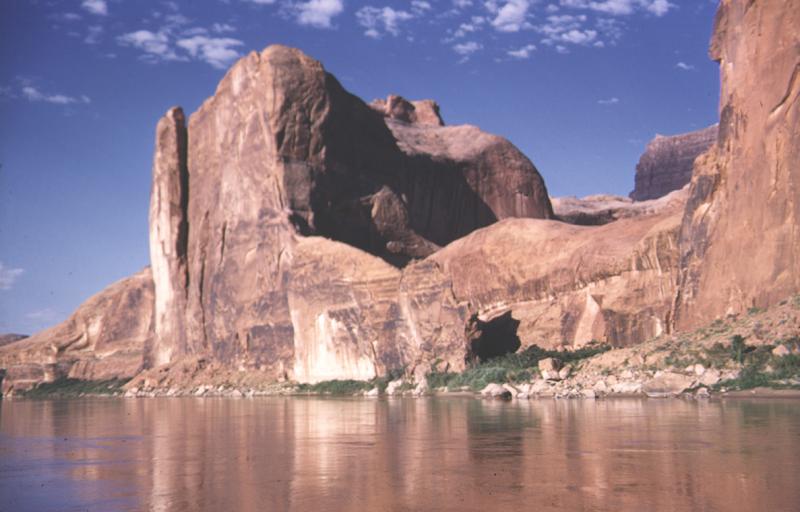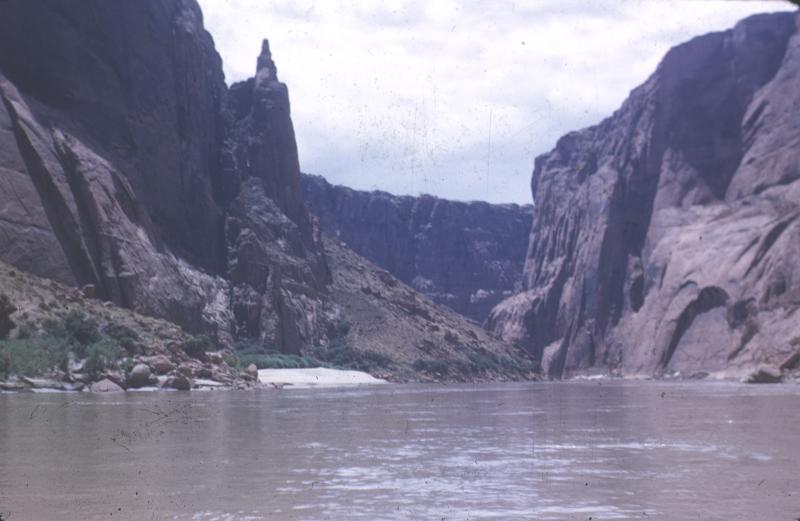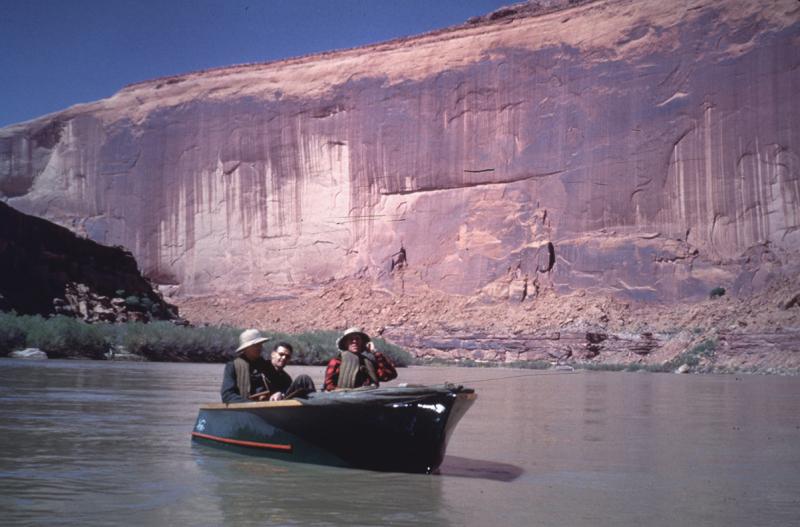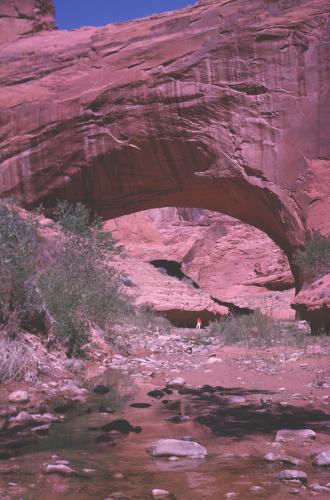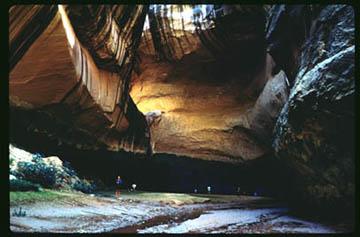Glen Canyon has been called “the place no one knew.” This remote stretch of Colorado River watershed had few visitors and even fewer settlers. But the number of those visiting by way of boat or raft was on the rise by the 1950s when the canyon’s fate was determined, so that there were enough admirers to mourn when, in 1963, the gates of Glen Canyon Dam were closed and this desert oasis began to disappear under the rising waters of Lake Powell.
In the 90-plus years following the first surveys by John Wesley Powell, enough photographic imagery of Glen Canyon had been produced to preserve the memory of what was lost. The J. Willard Marriott Library is the repository of several collections of such imagery, and it is now available through the Digital Library. Come travel back in time, and join the ranks of those who know Glen Canyon as it was.

